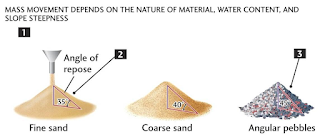Gastro-retentive drug delivery systems
Gastro-retentive drug delivery systems (GRDDS) are designed to prolong the gastric residence time of orally administered drugs. This technology is particularly useful for drugs that have a narrow absorption window, are unstable in the acidic environment of the stomach, or have low solubility or bioavailability. GRDDS can improve the efficacy and safety of drugs by providing sustained release and targeted drug delivery.
Working principle:
The principle behind GRDDS is to keep the drug in the stomach for a longer period of time by utilizing various mechanisms such as floating, bioadhesion, swelling, or mucoadhesion. This can be achieved through the use of various excipients, such as polymers, gases, or lipids.
Advantages:
GRDDS offers several advantages over conventional drug delivery systems. These include:
Targeted drug delivery: GRDDS can provide targeted drug delivery to the stomach, which can improve the efficacy and safety of drugs.
Improved bioavailability: GRDDS can improve the bioavailability of drugs by prolonging the gastric residence time, which can increase the absorption of the drug.
Reduced dosing frequency: GRDDS can reduce the dosing frequency of drugs by providing sustained release, which can improve patient compliance.
Reduced variability: GRDDS can reduce the variability in drug absorption by providing a more consistent release profile.
Disadvantages:
GRDDS also has some disadvantages. These include:
Complex design: GRDDS requires a complex design that may increase the cost of production.
Limited drug compatibility: GRDDS may be limited in terms of drug compatibility due to the need for a specific drug formulation.
Limited market availability: GRDDS is a relatively new technology and may not be widely available in the market.
Applications:
GRDDS has applications in several areas of drug delivery. These include:
Treatment of gastrointestinal disorders: GRDDS can be used to treat gastrointestinal disorders such as peptic ulcers, gastric reflux, and inflammatory bowel disease.
Controlled drug delivery: GRDDS can be used to provide controlled release of drugs, which can improve patient compliance and reduce dosing frequency.
Vaccines: GRDDS can be used to deliver vaccines to the stomach, which can improve the efficacy of the vaccine.
Use:
GRDDS can be used for various drugs such as antacids, antiulcer agents, and antibiotics. For example, ranitidine hydrochloride, a commonly used antiulcer agent, has been formulated as a GRDDS to improve its bioavailability and reduce dosing frequency.
Importance:
GRDDS is an important technology for drug delivery because it can improve the efficacy and safety of drugs by providing targeted and sustained release. It is particularly useful for drugs that have a narrow absorption window or are unstable in the acidic environment of the stomach. GRDDS can also reduce the dosing frequency of drugs, which can improve patient compliance and reduce the risk of adverse effects.
In conclusion, GRDDS is an important technology for drug delivery that can provide targeted and sustained release of drugs in the stomach. It has several advantages over conventional drug delivery systems, including improved bioavailability, reduced dosing frequency, and improved patient compliance. While it has some limitations, GRDDS has applications in several areas of drug delivery and is an important tool for improving the efficacy and safety of drugs.




Comments
Post a Comment